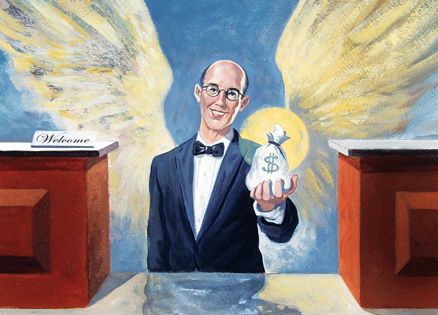Growing up in South Akron, Ohio, Sam Ciccolini loved two things above all else—God and music. “I knew that when I grew up I was either going to be a priest or a concert pianist,” he says. Neither goal would be easy. “Like most families in my neighborhood, we had it tough—especially after my father died. My mother scrubbed floors and took in washing.”
In his senior year of high school, Sam won a piano competition. His future as a pianist looked great. But equally great was the call of the spirit. He was also accepted at a seminary. “I knew the Lord wanted me where I could do the most good. That meant seminary. I also knew if it was God’s will I’d be able to use my love of music too.” At seminary Sam saw a note on a bulletin board asking for volunteers to work in a prison halfway house. “The men would leave, and before I knew it they’d be back. ‘Why are you back in here?’ I’d ask. I always got the same answer: ‘Alcohol.’” As a kid, Sam watched countless lives destroyed by drinking. He also saw the lack of empathy alcoholics received. Sam saw it differently. “These men and women didn’t need punishment. They needed love.”
In the late sixties, treatment for alcoholics and drug addicts was still in the dark ages. Among the clergy, alcoholism was often seen as a moral problem: a matter of character. “Something that couldn’t be changed,” Sam recalls. Though Alcoholics Anonymous had been a potent force since its birth in Akron in 1935, there were few places where an alcoholic could be immersed in a 12-step lifestyle long enough for it to stick. Rehabs as we know them today simply didn’t exist on a large scale.
Father Sam graduated from seminary in 1967 and took an assignment at St. Anthony’s Church in north Akron. Soon he was working daily with alcoholics and addicts, using tools he’d picked up from AA’s Big Book. Then he got an idea. “I knew of this big abandoned house near where I grew up. We got permission to use it, cleaned it out, put some cots in there and started Akron’s first therapeutic rehabilitation community for alcoholism.”
Father Sam called it Interval House. The name hearkened back to his passion for music (“interval” denotes the space between two notes on a scale), and also suggested what he most wanted to give to those suffering: a space set apart from the confusion and pain of their lives, within which they could find their way to God. “Many alcoholics really did want to change, more than anything. AA gave them spiritual tools—they just needed time and space to use them. For people at the lower end of the economic ladder, time and space can be hard to come by. That’s what we provided.”
It worked. Father Sam again found himself seeing the same faces back at Interval House, just as he had when he’d worked at the prison halfway house. But this time, the people coming back were doing so to thank him for helping to change their lives. “It was wonderful, but it was also frustrating. We were constantly turning people away because of lack of space.” One day Father Sam was having coffee with the prior of a Carmelite monastery on the fringes of Akron. “I actually knew the place from when I was a kid,” Sam says. “The monks raised chickens, and my mom would drive out to buy cracked eggs for a nickel a dozen. I always loved the atmosphere of the place. It had something truly holy about it.” The prior told Father Sam that the monastery would soon be closing. “When I heard that, something just clicked. Natural beauty is a profoundly healing thing. The buildings were already set up to accommodate a contemplative community—and that, in essence, is what a rehab is. I realized I’d found the place where I could truly give alcoholics and addicts the spiritual interval that would allow them to achieve lasting change.”
To raise enough money, Sam borrowed on his car and got his classmates in ordination to chip in. To a man, they each gave their month’s salary. When Sam approached the Bishop of the Diocese of Cleveland, he received not only the Bishop’s blessing, but also a check from the Bishop’s personal bank account. Sam was elated, yet overwhelmed. “The first thing I did after the monastery was ours was walk into the chapel, drop to my knees and say, ‘Lord, now what? Help me.’” Ever since, he’s never stopped doing that.
This month marks the thirty-fifth anniversary of the Interval Brotherhood Home. Since opening in 1970, it has helped more than 8,000 alcoholics and addicts find their way to sobriety and a new life. In an America full of larger, far better funded rehabilitation facilities, the chances of someone at IBH staying sober after he or she leaves are significantly higher than the national average. Why? Most people would say: Father Sam himself. He will have none of that. “There is indeed something special about this place, but that’s not because of me. It’s because of the spirit that is present here. I felt it from the beginning.”
As for his musical abilities, Father Sam was right about finding a way to make use of them too. “Running this place is a little like conducting an orchestra. There’s so much happening, so many people coming and going. And isn’t recovery itself about rediscovering the music in one’s life?”
This story first appeared in the October 2005 issue of Guideposts magazine.





